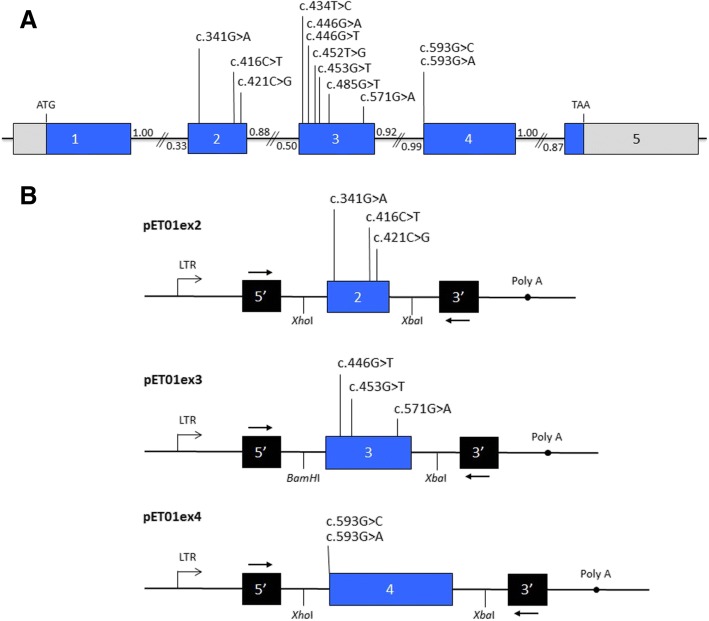Fig. 2.
Location of presume missense mutations analysed in this study and schematic representation of CLDN16 minigenes. a Boxes represent the five coding exons and black lines in between indicate intron sequences. Coding and non-coding regions appears in blue and grey, respectively. Exons and introns sizes are not at scale. Small numbers indicate NNSplice scores of donor and acceptor splice sites. b Structure of CLDN16 minigenes used in the splicing reporter assay. Blue and black boxes represent CLDN16 exons and 5′ and 3′ exons of the shuttle vector pET01, respectively. Black lines indicate intron sequences. The minigenes were constructed by introducing a CLDN16 genomic fragment containing exons 2, 3 or 4 and flanking intronic sequences into the vector as described in Materials and Methods. The position of each mutation and the restriction sites used for cloning are indicated. Arrows above and below the vector exons represent primers used in the RT-PCR assays. LTR, long terminal repeat promoter of the Rous sarcoma virus; Poly A, polyadenylation site. The minigenes will express a poly-A+ RNA containing the spliced exons

